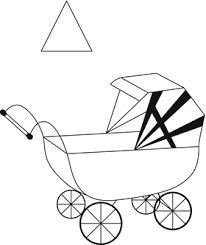About
The Photos & the Photographer
Art Photography - Microworlds of Rust
My art is not for everyone. But those who are prone to studying the hairline cracks in a mirror or remember wondering at the colourful swirls inside a glass marble as a child will find something in them.
Rust and decay are the everchanging consequence of the interaction between man and the elements. Every shipping container, every heavy-duty construction vehicle, every fishing boat is subject to incessant corrosion and decay. Not just these, most objects around us are. We repair, we reconstruct, we repaint. And things always corrode, or wear, or rot.
But through the cracks in the paint appear alien landscapes from distant planets, pools of hot lava floating in the sea, ghostly silhouettes in the foggy distance, or echoes of faces that never were. Whatever we find in them is highly individual. This raises questions about the relationship between how we see and our surroundings.
The images I offer here are everywhere and plentiful. They are thousands of them in every city street, construction site, ship yard, or shed that lives at the back of the garden. Most people miss them. I cannot help but see them; they draw me in and calm me down. Let me point them out to you, so you can make them your own.

None of the colours in the photos on this website have been added or replaced. My working method brings to the front the subdued colours that are all inherently present in the rust and decay photographed.

R. van Bronswijk
I am an eclectic academic on the autism spectrum. Word and image are at the centre of my work and my life. My mother discovered I could read by the age of three, and I got my first camera aged eight as a birthday present.
People, places, and movement outside around me often present a sensory onslaught – too bright, too loud, too fast. My waking life is a restless search for calm, for little islands of stillness in a raging hurricane. The ability to shut out my surroundings by focusing on a detail – a thread woven into the carpet, a scratch on the surface of a glass, or the wear on the fast-forward button of the remote control – helps me to find some of that calm.
I’ have a PhD in English literature obtained from Birmingham University (UK), where I completed a thesis on fairy-tale influences in late-nineteenth century literature. Since the year 2000, I have taught at a number of universities in departments of English, Media Studies and Communication. Currently, I am focussing more on my writing and photography.
I live and work in IJburg, Amsterdam.
The Autistic Eye

Find the triangle in the picture of the pram …
My photography is fairly representative how most autistic people are thought to perceive the world. One of the more successful theories about people on the autism spectrum is Uta Frith’s Theory of Weak Central Coherence. The theory proposes that autistic people do not process information “globally”, as neurotypical (=non-autistic) people do. A global processing style allows you to have a quick overview of a situation, see the relevant context and filter out what is less important. Instead, autistic people tend to have a more fragmentary processing style, building the complete picture piece by piece from countless details. This makes it harder to prioritise one detail over another, and to give a quick interpretation of the situation as a whole. A body of literature on perception, language and information processing has found evidence to support this theory.
Though the literature on autism often treats this as a disadvantage or a deficit, “weak” central coherence, also means “strong” on detail. It has increasingly become apparent that the autistic processing style has its advantages and strengths, including a good memory for factual information, good linear logical reasoning skills, and an eye for visual patterns and detail that others miss. Studies have repeatedly shown that people on the autism spectrum tend to be much better than non-autistic people at the embedded-figures test, for instance. In this test, participants are asked to find a specific shape in a picture made up of multiple shapes that form a meaningful image, such as the pram above.

